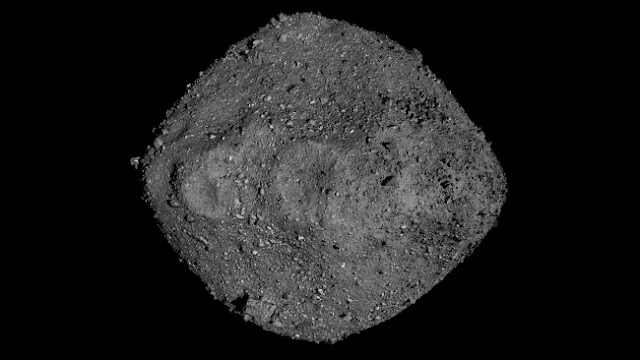NASA got a huge marvel whilst it landed a spacecraft on the asteroid Bennu in 2020 and blasted a large crater in the rocky body — but the getting to know experience may want to help shop the Earth if an asteroid ever threatens to wipe us out.
 |
| A mosaic image of the asteroid Bennu created using data from NASA's OSIRIS-REx mission. (Image credit: NASA/Goddard/University of Arizona) |
The Assignment : In 2016, NASA launched the OSIRIS-REx spacecraft to get an up-near look at the asteroid Bennu. Two years and 1.2 billion miles later, the spacecraft arrived at its destination and started surveying Bennu from as near as four miles above its floor.
In 2020, NASA took the mission a step further, sending OSIRIS-REx to the asteroid’s floor to collect a sample — some thing no NASA spacecraft had ever finished earlier than.
For that part of the mission, OSIRIS-REx in short touched down at the asteroid’s surface and despatched out a gasp of gasoline. It then captured a piece of the material dislodged through the gasoline earlier than firing its thrusters to again faraway from Bennu.
The plan labored, but in NASA’s simulations of the asteroid, the process have to have left the tiniest divot at the asteroid’s surface. The actual challenge created an explosion of particles and a 26-foot-huge crater on the touchdown site.
 |
| Credit : NASA |
Learning Experience : Based on records from the collection assignment and a observe-up flyby remark of the landing web site, researchers have decided that the surface of the asteroid Bennu is so loosely packed, OSIRIS-REx could have just kept sinking into it if it had now not fired its thrusters on schedule.
NASA describes it as being similar to the plastic ball pits kids play in — put any pressure on the rocks and bits of dust on Bennu’s surface, and that they’ll easily slide past one another.
“Our expectations approximately the asteroid’s surface had been absolutely wrong,” stated Dante Lauretta, principal investigator of OSIRIS-REx.
“It turns out that the debris making up Bennu’s outside are so loosely packed and gently bound to each different that they act extra like a fluid than a solid,” he introduced.
The researchers have now used the information from the OSIRIS-REx project to recalculate Bennu’s homes, detailing what they discovered in two papers.
This revel in could assist scientists as it should be interpret far off information on different asteroids — and that could be highly essential if we ever locate ourselves facing down an asteroid impact and want to launch a undertaking to deflect or ruin the threatening space rock.










